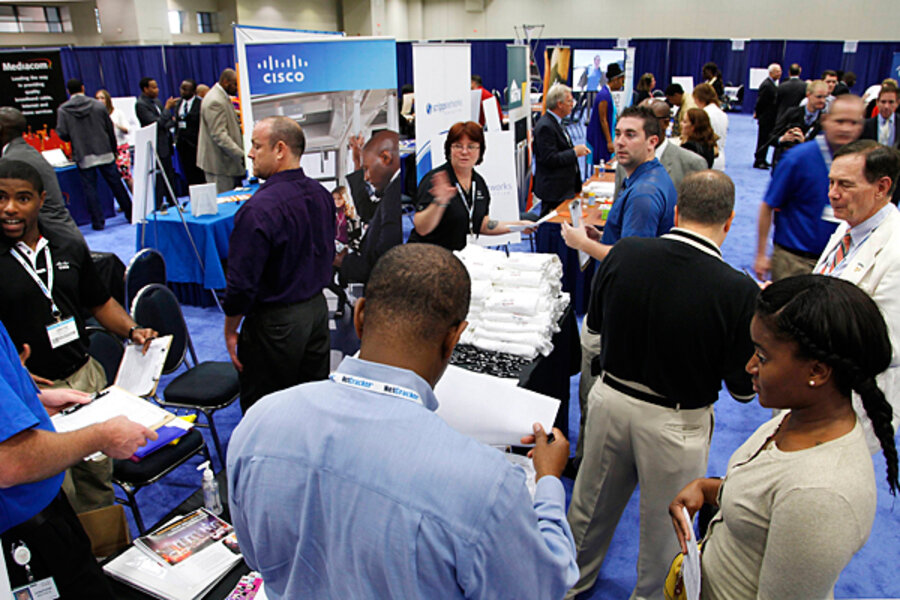US economy gains a robust 195,000 jobs, topping expectations
Loading...
| Washington
Americans had more to celebrate on the Fourth of July than they realized: The US economy added 195,000 jobs in June and more than 70,000 jobs than previously thought in April and May, according to the monthly employment report released Friday morning.
While the June jobs figure was right at the six-month average for US monthly employment growth, it topped economists' expectations of 165,000 net new jobs and showed the private sector added 202,000 jobs, higher than the most recent private-sector employment gauge.
Private-sector employment expanded by 185,000 from May to June, better than economists’ expectations of a 160,000-job improvement, according to the ADP employment report released earlier in the week.
While the government’s employment data point to a US economy on the mend, Friday’s jobs figures also show the continuation of some negative trends. While the unemployment rate stayed constant at 7.6 percent in June, a broader measure that includes workers who are out of work, underemployed, or discouraged from finding a job bounced up to 14.3 percent, half a percentage point higher than in May. Those working part-time but wanting full-time work increased 4 percent to some 8.2 million.
The rate of participation in the US workforce held steady at 63.5 percent, hovering around levels last seen in the late 1970s and early 1980s.
One Washington-centric economic imposition, the automatic budget cuts known as sequestration, appeared to have limited effect on the month’s jobs report. While the private sector chugged higher, governments at all levels shed 7,000 jobs – not good, but actually better than May's loss of 12,000 jobs. Government employment has shrunk by 65,000 jobs over the past year.
In total, the jobs report encouraged US markets on the typically sleepy day of post-Independence Day trading, with the Dow Jones Industrial Average rising more than 1 percent in trades before the opening bell.
A market jump is no guarantee, however, after even a bumper economic report. Investors tend to greet good economic news with some concern, wondering how strong is strong enough for the Federal Reserve to begin “tapering” its $85 billion monthly bond-buying program. The taper is expected to lead to rising interest rates and less central-bank-driven impetus to buy stocks.
While the Fed’s willingness to reduce its bond-buying will play out in months to come, some of Friday’s market enthusiasm may stem from actions of other central bankers on Thursday, when US markets were closed for the Fourth of July. Then, the top bankers in Britain and the wider eurozone announced they would keep interest rates low for an extended period.





